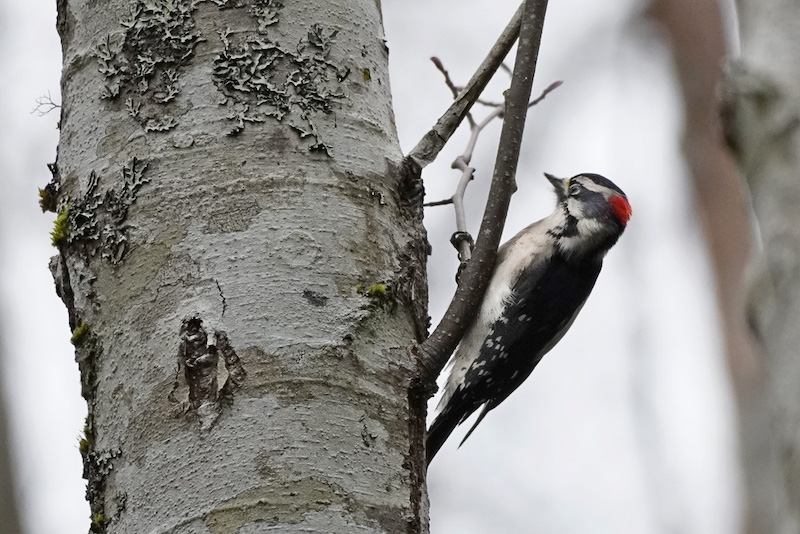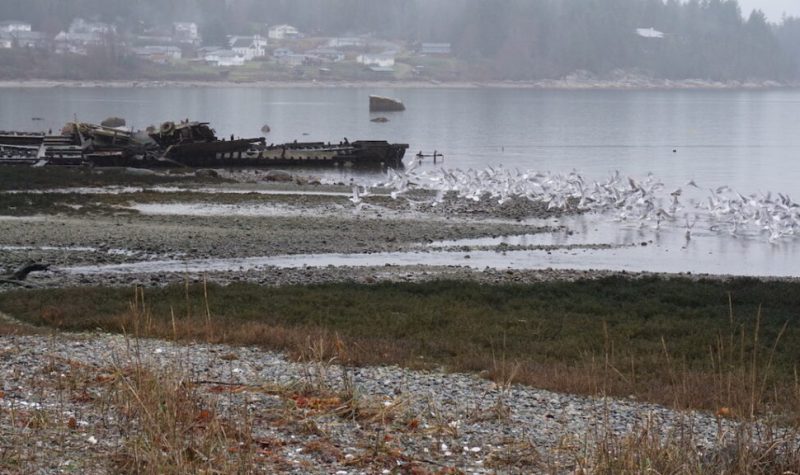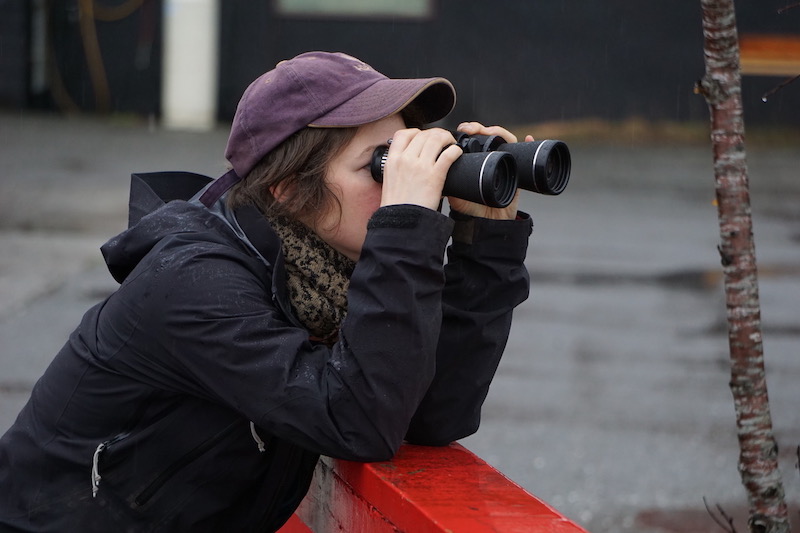By Roy L Hales
When you talk about Cortes Island’s population, most of us think of humans but there is an even larger avian population. The Cortes museum has been taking an annual Christmas Bird Count since 2001. There were 38 participants this year. Most were in five groups, but there were also a number of people who reported birds visiting feeders, or parts of the island not on the established routes.
The December 2019 Christmas bird count
They counted 3,149 birds from 65 species, which is about average.
When I inquired about interviewing someone, the museum suggested I contact Laurel Bohart, who led the team in Squirrel Cove.
“The reason we do a winter bird count is these are residents, and this gives us a better understanding and idea of the resident bird populations. What we did see, and I didn’t see it, but it was seen near Mansons Lagoon and Hollyhock: was Greater Yellowlegs. This is a shorebird, related to gulls … and they’re very rare. They shouldn’t even be here,” she said.

Human Impacts On Bird Population
One of the most intriguing aspects of Laurel Bohart’s analysis of the changing populations is the degree to which non-climate change related human activities are believed to be the cause:
- The Canada Goose population is in decline because of the egg shaking program (you shake the egg to separate the yolk from the white, so an embryo can’t form).
- Barn Swallows are disappearing because we have fewer barns, less insects, and they are one of the species tricked into raising Cowbirds instead of their own young. (Female Cowbirds put their eggs into smaller birds nests and, as the Cowbird chicks are bigger, they can push the other chicks out.)
- The Warbler, smaller Sparrow, and Fly Catcher populations are declining rapidly because of habitat loss.They are also one of the species that fall victim to Cowbird trickery.
- Cowbirds thrive on lawns (and bird feeders!).
- As a result of the depletion of fish stocks, eagles are looking for other sources of food. This has resulted in an increased predation of goslings and ducklings.
- Eagles are also eradicating herons, who are their competition for salmon and herring. (In the podcast above, Laurel tells us how the adult male heron, in the Natural History Exhibit at Linnaea Farm, died)
- There are more Jays on the island because we have more walnut, hazel and fruit trees.
- The Raven population is increasing because of our garbage dump, road kill, and compost heaps etc.
- House Finches and Purple Finches are becoming more numerous because of the number of bird feeders on the island.
- There would be no Anna’s Hummingbirds in our area if it were not for bird feeders. They started coming to Vancouver Island about 40 years ago.

What effect has Climate Change had?
Can you point to any species and say their population increase or decrease is due to climate change?
“I’d have to think about that. I’m fairly sure that we’re losing not so much species as numbers among the species, especially Warblers, Vireos and all those little insect eaters – because we’re losing insects. That may be due to climate change, but it is also because of our habit of using pesticides. We have to stop doing that. Climate Change, to me, is just one factor. There are a great many other factors in our changing world … The issue that is mostly changing the bird population is the human population,” said Laurel Bohart.

What did you learn from this year’s count?
“It’s always best to take a newbie with you because they may spot something that you don’t and ask questions that make you think and make you rethink how you are doing something.”
“It turns out this novice, Donna Collins, has very sharp eyes and is an excellent recorder. She is the museum secretary now and extremely precise. This really helped because she was able to remind me of things I might have forgotten. The count was a lot more accurate than it might have been with just Tom and I doing it, because then we would have had to go through everything and remember what we did see. Also she kept me explaining which bird was which; how you could tell field signs; the sounds they were making or not making; what we expected to see; and which species I thought we might see and didn’t …” etc
“For instance the Cooper’s Hawk. I didn’t see that. If it hadn’t been for Donna we might have missed that and it was the only Cooper’s Hawk on the count.”




